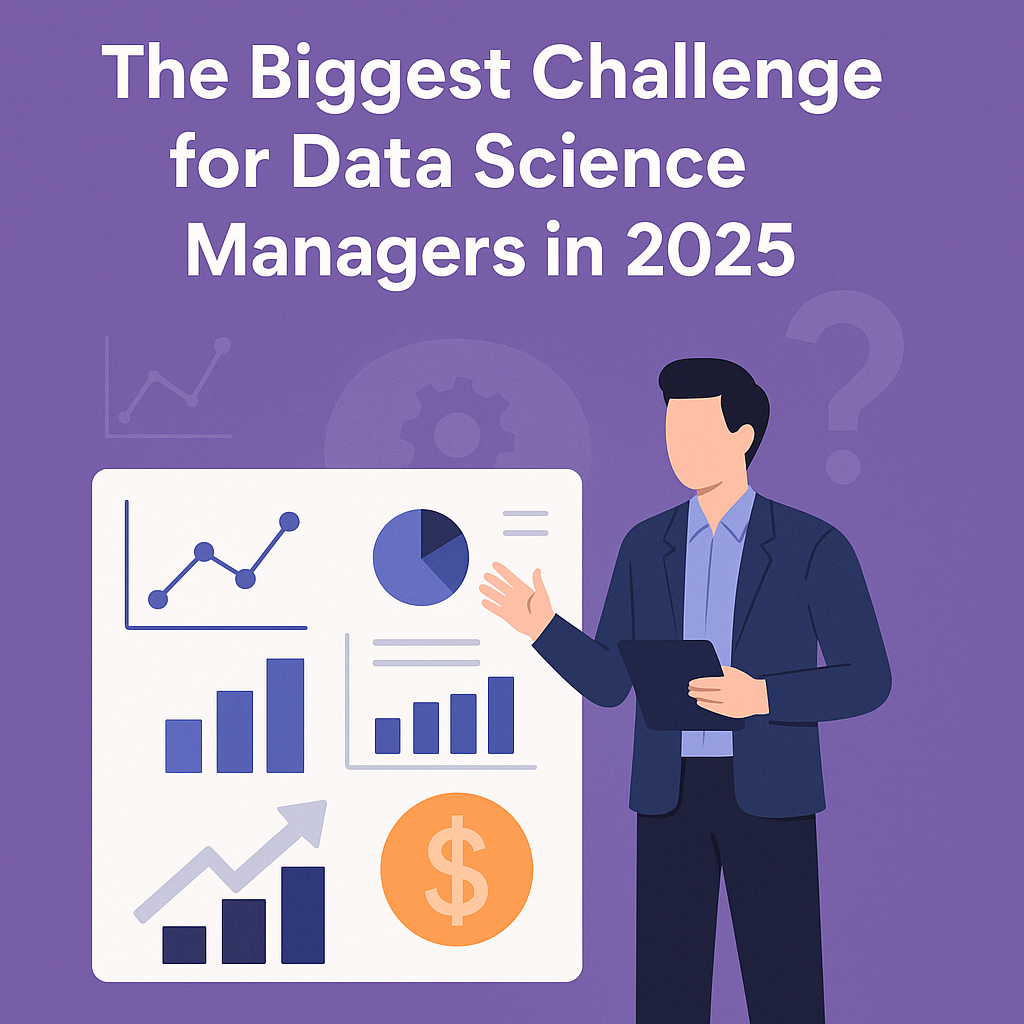In 2025, the world of data science is more powerful—and more complex—than ever. Generative AI, real-time analytics, cloud-native data platforms, and edge computing are transforming what’s possible in almost every industry. But with all this progress, data science managers are facing a stubborn, overarching challenge:
How do we turn all this advanced data work into real, measurable business impact?
The Hype Is Real—So Are the Expectations
Businesses have invested heavily in AI and data science over the past decade. In return, stakeholders want to see tangible ROI—not just impressive dashboards, but increased revenue, improved efficiency, and smarter decision-making.
Yet many data science managers find themselves stuck in the gap between technical achievement and business application. Their teams build accurate models, but those models often fail to influence real-world operations in a meaningful or sustainable way.
Why This Challenge Has Grown in 2025
Several trends have made this challenge more urgent and more difficult:
1. AI Democratization Is a Double-Edged Sword
Thanks to platforms like ChatGPT, Copilot, and other no-code/low-code tools, more people in an organization can now build models or run analysis. That’s a good thing—until it creates duplication, misaligned priorities, or data chaos. Data science managers must now guide and coordinate across departments to ensure consistency and value delivery.
2. Data Volume and Complexity Continue to Grow
Organizations now collect data from hundreds of sources: sensors, mobile apps, customer feedback, CRMs, and more. The result? Bigger workloads, more data silos, and an increasing risk of garbage-in/garbage-out. Managers must balance technical quality with business speed—while protecting privacy and ethics.
3. Business Teams Want Speed Over Accuracy
Executives often care more about actionable insights now than perfect models later. But rushing can lead to overfitting, bias, or poor generalization. Managing these trade-offs without burning out the team—or compromising quality—has become a major leadership challenge.
What Makes This So Hard for Managers?
Bridging the business/technical gap isn’t just a skill—it’s a discipline. Data science managers must:
- Speak fluently in both technical jargon and business language
- Prioritize projects that align with the company’s core goals
- Say “no” to exciting-but-low-impact ideas
- Help executives interpret probabilistic results in decision-making
- Monitor deployments to ensure models actually perform in production
- Educate others on data limitations, risk, and ethical use
In other words, data science managers are no longer just leading coders—they’re acting as translators, strategists, and change agents.
How the Best Managers Are Meeting the Challenge
The most successful data science leaders in 2025 are adopting a few smart approaches:
1. Start with the Problem, Not the Model
Rather than chasing the latest tech, they spend more time upfront understanding the business pain point. If you don’t know what success looks like from a business angle, no model will help.
2. Build Cross-Functional Bridges
They bring in domain experts, product managers, and engineers early. This creates shared ownership—and reduces the chance of last-minute deployment disasters.
3. Focus on Deployment and Monitoring
They ensure every model has a clear path to production—with defined metrics, ownership, and regular retraining schedules.
4. Measure Value Relentlessly
Top teams don’t just look at model accuracy. They track how insights drive cost savings, revenue growth, or customer satisfaction, and report those results to leadership.
Summary
In 2025, the biggest challenge for data science managers isn’t technical—it’s organizational. It’s about bridging the last mile from data insights to business outcomes.
Mastering that last mile requires communication, strategy, and relentless alignment with business value. It’s tough—but for those who get it right, the impact is enormous.
After all, in a world overflowing with data, it’s not the best model that wins—it’s the best result.



